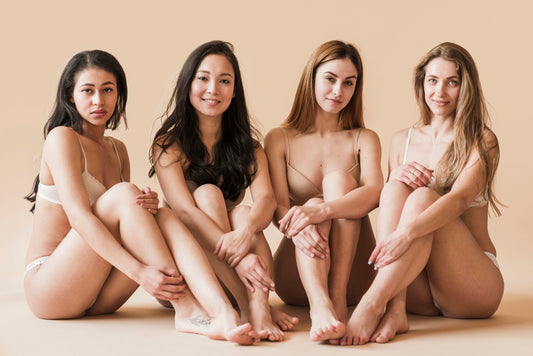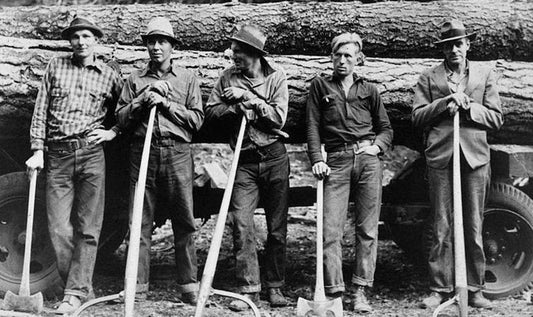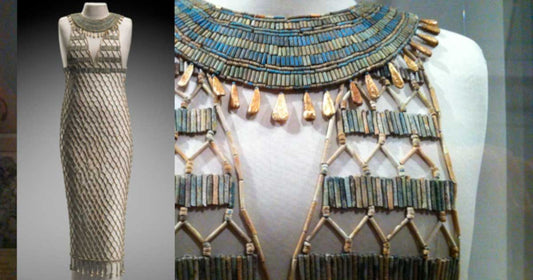Introduction
When you think of women's underwear today, you might picture a multitude of styles and fabrics that reflect personal taste, comfort, and fashion. But how did we get here? The evolution of women’s underwear tells a fascinating story of social norms, technological innovation, and changing views on femininity. Let's dive into this journey through time to understand how each era has left its mark on what we now consider essential undergarments.
The Origins of Women’s Underwear
The concept of underwear has been around for centuries, though its purpose and appearance have shifted dramatically. Early undergarments were created for practicality, offering protection and modesty in ancient cultures. These garments, however, bore little resemblance to the varied and intricate designs we know today. In many ways, underwear was about utility rather than fashion in these early days.
The Roman Empire and the “Strophium”
In ancient Rome, women wore a garment called the “strophium,” a type of band that wrapped around the chest. Made from linen or soft leather, the strophium served as a support garment and reflected the Romans’ view of the human body. While not as elaborate as the bras we wear today, the strophium provided comfort and modesty, laying the groundwork for future undergarment designs.
Middle Ages Underwear: The Chemise
As society transitioned into the Middle Ages, women’s undergarments became more concealing and complex. The chemise, a long, loose-fitting garment, became a common staple. It was worn beneath dresses to protect the outer garments from sweat and dirt, as laundering was often limited. This era focused on modesty, with the chemise covering much of the body.
Renaissance Innovations and Corsetry
The Renaissance brought not only cultural and artistic achievements but also new ideas in women’s fashion. Corsets emerged during this period, designed to shape the torso and create a structured silhouette. These garments, often made with boning or stays, became symbols of social status and beauty. Corsetry would later play a monumental role in women’s underwear history, lasting well into the 19th century.
Victorian Era Underwear Revolution
In the Victorian era, women’s underwear underwent a revolution with the introduction of items like crinolines and bloomers. Queen Victoria’s influence helped shape a more modest and structured look, and these garments became essential. Bloomers, named after women’s rights activist Amelia Bloomer, aimed to provide comfort while maintaining the modesty prized in this era.
The “Combination” Undergarments
Combination undergarments, which united the top and bottom pieces into a single garment, became popular in the late 19th century. This innovation allowed for a smoother silhouette and offered more ease and practicality compared to multiple layers of undergarments.
Early 20th Century: The Dawn of Modern Underwear
The early 20th century marked a turning point as World War I encouraged simpler, more functional attire. With women stepping into new roles in the workforce, fashion took on a practical approach, favoring comfort and ease of movement. This shift influenced underwear, and more flexible designs emerged.
The Invention of the Bra
One of the most pivotal moments in the history of women’s underwear came with the invention of the bra. In 1914, Mary Phelps Jacob created the first modern bra by stitching two silk handkerchiefs together with ribbon, marking the beginning of a new era in intimate apparel. Corsets soon fell out of favor, with bras providing a more comfortable and supportive alternative.
Mid-20th Century: Embracing Feminine Freedom
As society moved further into the 20th century, elastic materials like nylon and spandex revolutionized underwear design. Women’s underwear became lighter, more breathable, and more comfortable, embracing the spirit of freedom and self-expression. This period also saw the birth of popular styles like the bikini cut, which prioritized comfort without sacrificing style.
The Rise of Panties and Slips
Panties, as we know them today, began to dominate the market, coming in a range of styles from briefs to bikinis. Slips also became popular, offering a smooth layer under dresses. These designs emphasized comfort and functionality, adapting to the active lifestyles that many women were adopting.
The Influence of Pop Culture on Underwear
Pop culture icons in the 20th century, like Marilyn Monroe, played a significant role in shaping lingerie trends. Hollywood embraced the idea of glamorous and sensual underwear, and women around the world followed suit, making bold and stylish lingerie a symbol of femininity.
The Late 20th Century: The Lingerie Boom
The latter part of the 20th century saw a “lingerie boom” with brands like Victoria’s Secret redefining the market. Lingerie was no longer just about functionality—it was an expression of identity and confidence. The idea of “sexy” lingerie became mainstream, giving women a way to feel empowered through their choice of intimate apparel.
The Thong Revolution
The 1990s brought about the thong revolution, popularized by designers like Calvin Klein. Thongs offered a no-show look under tight clothing, quickly becoming a wardrobe staple for many women. This style challenged traditional ideas of comfort and fashion, emphasizing boldness and self-expression.
21st Century: Sustainability and Inclusivity in Women’s Underwear
Today, the women’s underwear industry is evolving to reflect modern values, with a focus on sustainability and inclusivity. Brands are creating eco-friendly options using organic materials and fair labor practices, and there is a growing emphasis on representing diverse body types. The modern market is moving toward celebrating every body shape and embracing ethical choices in fabric and production.
Conclusion
The evolution of women’s underwear is a reflection of broader changes in society, from modesty and practicality to self-expression and empowerment. Each era has left its unique stamp on what we wear underneath, blending functionality with fashion in ever-changing ways. Today’s intimate apparel offers endless choices, showcasing how far we’ve come from the days of the strophium and chemise.








